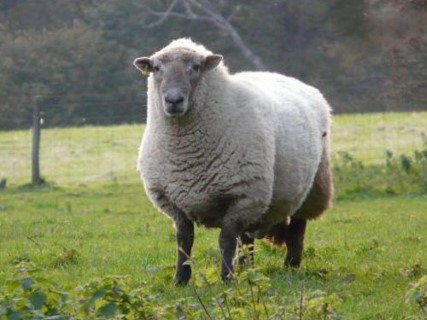 |
| Photo Source: National Sheep Association |
Hill Radnor Sheep, a native hill or mountain breed, are primarily found in the Border counties extending from the northern region of Powys down to southwestern Herefordshire and Monmouthshire. Renowned for their robust build and adaptability to rugged terrains, Hill Radnor Sheep are esteemed for their substantial body length and width, particularly in their hindquarters. These sheep stand on sturdy legs with ample bone structure, ensuring their resilience in challenging landscapes.
Upon birth, Hill Radnor lambs exhibit remarkable vitality and are characterized by their well-developed coats, which contribute to their ability to thrive in various environmental conditions. Known for their exceptional growth rates, Hill Radnor lambs quickly gain impressive body weight, reflecting the breed's genetic predisposition for vigor and robustness.
Hill Radnor Sheep are esteemed for their high fertility rates, with lambing percentages often averaging around 155%. This exceptional reproductive capacity underscores the breed's suitability for sustainable breeding programs and contributes to its enduring popularity among farmers and breeders.
Moreover, the Hill Radnor breed is renowned for its overall health and resilience, remaining largely unaffected by many contagious and hereditary diseases that commonly afflict other breeds. This inherent resistance to diseases enhances the breed's longevity and sustainability within diverse farming environments.
Acknowledging their significant contributions to agriculture, Hill Radnor Sheep are celebrated as a valuable heritage breed, embodying the resilience, adaptability, and robustness characteristic of traditional hill and mountain breeds.
